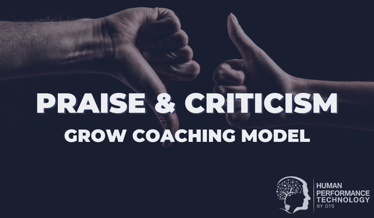Artificial Intelligence: Tips, Tricks & Words of Caution
This is the second post of the two-part series. In this post, we will explore some possible applications and tips to deploy AI in talent management. In the first post, we provided some basic information for talent management professionals around the concepts of AI.
Our Journey with AI
For the past 15 years, we have been writing in the talent management space, including this blog, as well as various manuals, books and training programs we have created. In an effort to introduce more variety, style and frankly, to help with the workload, we have been experimenting with different AI-based writing tools to see what they can do. Some of our favourites are jasper.ai, peppertype.ai (now peppercontent.io) and Chat GPT.
All of these tools are built on an AI technology called GPT (Generative Pre-trained Transformer). These GPTs can generate human-like text based on prompts from a user. The user “feeds” the tool a question or statement, and the GPT then creates an answer based on publicly available information.
In this post, we will focus on Chat GPT since it has a free version available (the others are paid services only).
What We Have Found
In our experimenting with these tools, we have found them to be great for:
- Idea Generation - Chat GPT has been great for coming up with lists of ideas. For example, “What should I know about Change Management?” yields an excellent list of topics to explore.
- Simplification - Chat GPT seems to be able to write in plain simple English, even with complex ideas. It has been a great tool to feed a paragraph and ask it to rewrite it.
- Know Your Subject Matter - We have found Chat GPT to be a great support to writing, but it cannot stand alone. These tools rely on publicly available information and can sometimes get confused or taken down the wrong path.
- Specific Topics/Facts - The more specific or niche a topic, we found the tool becomes less helpful. For example, we asked it to explain one of our assessment tools (for which we know there is publicly available information), and it was flat-out wrong in its description of how the questionnaire was designed.
- Not Great for Facts/Quotes - As an extension to the above point, we had heard an example of Chat GPT quoting a study that, when challenged on, the tool responded with a retraction. We had a similar experience with the tool quoting an author as saying something in a book, yet we had the same book, and the quote did not exist.
Overall, Chat GPT was a massive help for idea generation and rewriting concepts, but its ability to provide facts that we could rely on was a little shaky.
Our Tips for Using Chat GPT
Given our experience with the tool and exploring some of its strengths and limitations, here are a few tips for using Chat GPT:
- Conduct an Interview - Treat the tools like you would someone you are learning from. Ask it questions, then follow-up questions. Treat your interaction like a conversation.
- Ask in Different Ways - In a similar vein to the above, ask specific questions and then ask them in different ways. For example, say we were looking to explain the difference between aggressive and assertive, we might ask the direct question, “What is the difference between aggressive and assertive?”, then follow up with, “How can I tell someone is being aggressive verses assertive?”, “What are other ways to describe aggressive behaviour?”, “What are other ways to describe assertive behaviour?”. You will find this multi-angle kind of inquiry yields more variation and ideas.
- Be a Skeptic - Don't just have blind faith that the tool knows what it is talking about. For whatever reason, Chat GPT seems to come across as very confident; perhaps it is the style of writing or the chat style interface. But it is important to recognise this tool does not know the answers; it is formulating a response based on patterns and algorithms. For example, we asked it what 10 plus 2 was, it answered “12”, we told it “, That’s incorrect”, and it apologised and gave the answer “, I apologize for my mistake. 10 plus 2 is equal to 12, not 22 as I previously stated. Thank you for bringing this to my attention”. Nowhere in our previous line of questioning was there a 22.
- Request Proof - Just like your university professor did, you can ask the tool to provide sources. And you should! We use phrases like “Do you have empirical evidence”, “Can you source that quote” or “Is that a real study”.
Words of Caution
A few words of caution, while these tools are extremely helpful when used well, they also have an inherent risk:
- Privacy - Don’t give them personal, proprietary or confidential information.
- Curate Don’t Copy - Copyright/legal issues aside, don't just copy and paste the output. Know and understand what the tool has given you and what it means.
- Verify - When it comes to facts, statistics, direct quotes etc., you want to verify them independently.
- Implications - Consider the implications of using these technologies. For example, we all used to be able to back up a car without hitting anything without the aid of a reversing camera. Don’t let these tools make you a lazy thinker by over-dependence.
Real World Talent Management Examples
To round out this post, here are some real-world examples of ways you might use Chat GPT as a Talent Manager. Let us know what you think!
|
Example 1: Writing Job Descriptions
Please submit your resume, a cover letter detailing your interest in the position and relevant experience, and at least two writing samples that showcase your ability to create engaging blog content. We look forward to reviewing your application and discovering how your talents can contribute to the success of [Company Name]. |
|
Example 2: Behavioural-Based Interview Questions
|
References
- Britannica n.d., Alan Turing and the beginning of AI, accessed 5 April 2023, https://www.britannica.com/technology/artificial-intelligence/Alan-Turing-and-the-beginning-of-AI
- Burns E, Laskowski, N and Tucci, L 2023, artificial intelligence (AI), accessed 5 April 2023, <https://www.techtarget.com/searchenterpriseai/definition/AI-Artificial-Intelligence>
- ChatGPT <https://openai.com/blog/chatgpt>
- IBM n.d., What is artificial intelligence (AI)?, accessed 6 April 2023, https://www.ibm.com/topics/artificial-intelligence
- Joshi, N 2019, 7 Types Of Artificial Intelligence, accessed 5 April 2023, https://www.forbes.com/sites/cognitiveworld/2019/06/19/7-types-of-artificial-intelligence/?sh=1756c29d233e
- Monash University n.d., Using artificial intelligence, accessed 6 April 2023, https://www.monash.edu/learnhq/build-digital-capabilities/create-online/using-artificial-intelligence
- Wikipedia 2023, John McCarthy (computer scientist), accessed 5 April 2023, <https://en.wikipedia.org/wiki/John_McCarthy_(computer_scientist>

Trevor O'Sullivan
General Manager. Since the early 2000s, Trevor has worked with thousands of Talent Management professionals to develop and apply assessment-based talent management solutions for selecting, developing and managing people. Trevor is an active member of the TTI Success Insights (TTISI) Global Advisory Council, contributes to TTISI product development and is a regular presenter at TTISI-R3. He is honoured to have received multiple Blue Diamond Awards and, more recently, the Bill Brooks Impact Award recognising his contributions to the TTISI global network.


/the%20top%2010%20%20best%20hr%20articles%20%26%20videos.png?width=374&name=the%20top%2010%20%20best%20hr%20articles%20%26%20videos.png)
We Would Like to Hear From You (0 Comments)